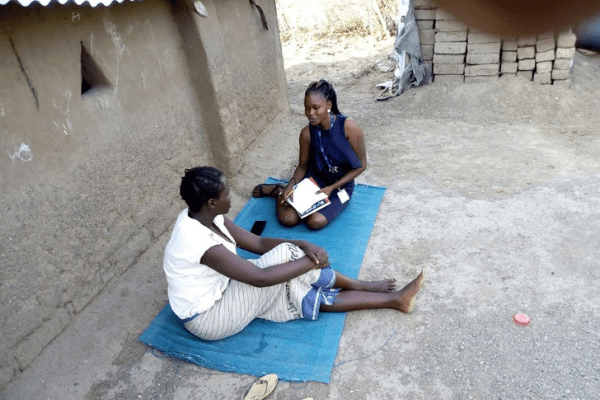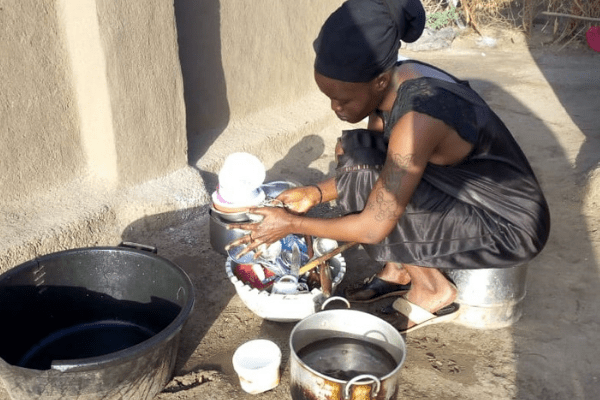
“My name is Nyawuok Chuol Mut. I am a South Sudanese refugee. My day starts at 6.00am, when I begin to the normal household chores like cleaning the house and my compound, before preparing breakfast. At around 7.30am, I start my journey to the work place, which takes me 30 minutes . I work for Jesuit Refugee Service (JRS), in Kakuma refugee camp in the Turkana west part of Kenya as a Psychosocial Community Counsellor.
I walk to my work station and sign my name in the register book by 8.00am. After signing, I go to where my clients are and begin my counselling services. This work is emotional. Some refugees cry as they tell me their stories. Others are quiet, but their sadness shows on their faces. As a counsellor, I also feel emotional because some stories act as triggers for my own traumatic experiences as refugee as I made the journey to the camp.
My day is quite predictable because, each day, I have to walk to work. There are days when I have to miss work because of sickness or I have to go for firewood at the distribution centre1, which is a long distance from where I live. I also have to plan for the days of food distribution. There is a lot of struggle at the distribution centres – people push and pull to get the food because it is not given out at the centres in an orderly way. I have to walk back home from these places with food or firewood balanced on my head. I often feel exhausted and tired at the end of my day.
Other things happen in the camp, which can disrupt my normal routine. These could be emergencies such as a child falling sick in the night, which forces me to spend my time at the hospital, especially when the child gets admitted. Kakuma refugee camp is known for its harsh and extreme weather patterns. When it rains, the place gets flooded and movement becomes impossible. I cannot go for food, firewood or even to work because of the filled lagas2. My house is made of mud and so, during rains, it gets damaged by the water and then I have to do some repairs. The same thing happens when there are strong winds, especially during February and March. Roofs of houses get blown off during the day or night, leaving the inhabitants bare and vulnerable.

After work, I walk to the market to buy what I will prepare for dinner. Commodities are expensive in the camp. Traditionally or culturally, we eat our food as a community and in one pool, this is a symbol of togetherness. My main food is kisra3 and fish, sometimes I eat wal wal4 and milk.
Going by the mission of Jesuit Refugee Service of accompanying, serving and advocating for rights of refugees, I work for my fellow refugees to ensure that their psychological and emotional needs are met. I do this work because I easily connect with them, since I also have an almost similar experience. I discovered that counselling can be a powerful tool for human survival. I have the passion and drive, to help people to manage and cope with the stress of life as a refugee.”
Nyawuok Chuol Mut, Kakuma Refugee Camp, Kenya. April 2019
Notes:
1. Food and firewood are among the items distributed to refugees in Kakuma. The distribution time and place depends on where a person lives and the type of item (food or firewood).
2. A laga is a type of seasonal river which fills up during the rainy season but remains dry for the rest of the year.
3. Kisra is a traditional fermented bread made of either sorghum or wheat common in South Sudan
4. Walwal is a traditional South Sudanese food made of ground sorghum, lightly balled and boiled to a solid porridge.

